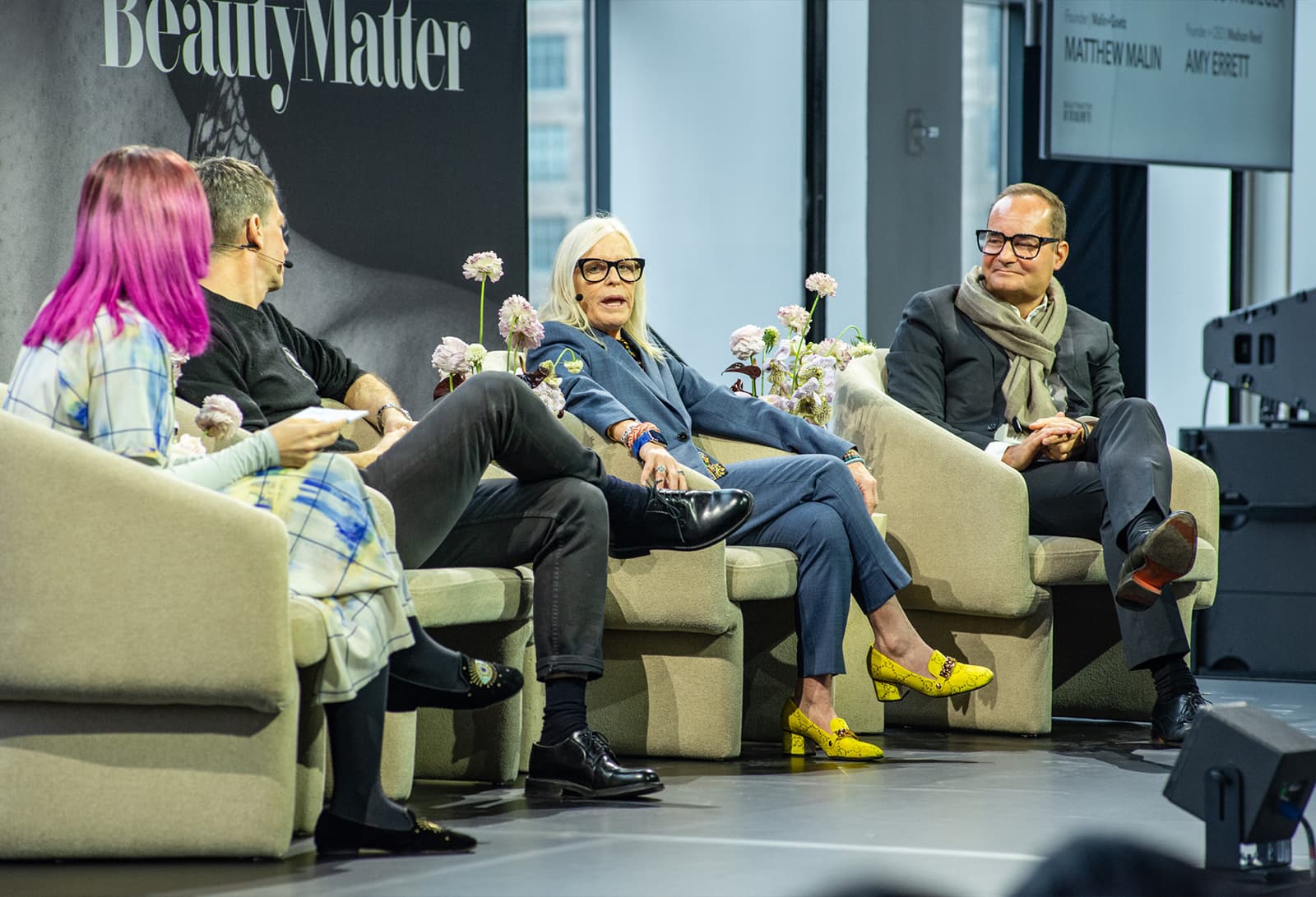In an age when digitally native beauty brands once scoffed at the idea of brick-and-mortar, retail stores have undergone a quiet reinvention. This transformation focuses on creating a more purposeful, human, and scalable experience, even for digitally native beauty brands that may have once dismissed the concept.
In a conversation at BeautyMatter’s 2025 FUTURE50 Summit moderated by Editor Carla Seipp, three retail experts—Mathew Malin, co-founder of Malin+Goetz; Marco Parsiegla, CEO of Amouage; and Amy Errett, founder and CEO of Madison Reed—offered an honest interrogation of what it takes to succeed with branded retail in a market still dominated by wholesale players and online channels.
Beyond the Storefront: Branded Retail as Brand Amplifier
For Malin+Goetz, retail locations have never been a side note. They’ve been the brand’s primary stage. “We’ve always started our brand experience through our stores,” said co-founder Mathew Malin in the panel. “That’s where we educate people on the products and deliver a real-life version of our ethos.”
Unlike brands that use retail as an afterthought to e-commerce success, Malin+Goetz has long relied on its stores not only for sales but as cultural beacons that distill the brand’s DNA into real-life immersive experiences. The company has 22 global locations, each of which communicates simplicity, inclusivity, and sophistication. “Design has always been a cornerstone in our story. It brings the brand to life in a way that digital can't replicate,” he said. “The store was built with the idea of taking the traditional neighborhood apothecary and making it modern,” he continued.
Amy Errett, founder of hair color disruptor Madison Reed, shares a similar philosophy, although she operates with a distinctly omnichannel mindset. “One of the beautiful parts about omnichannel is that it should look the same across locations, but that is also one of the most challenging parts,” she said. “The front of our store is retail, as that serves as a very important factor in consultations, even for those that color at home,” she continued. Today, Madison Reed has 95 color bars (salons) across the United States, each one serving as a high-touch supplement to the brand’s robust online hair color business.
For Marco Parsiegla, CEO of high-end perfume house Amouage, boutiques and branded retail have always been very important for Amouage. “As a high perfumer from a small town in Oman, it was very important that we transported our values to the stores, and the boutiques you see today are a core element of that,” he said. “We’ve also moved them from a very transactional concept to a more experiential concept.”
One of the most interesting points made by all three panelists was the central role of staffing, which they essentially described as the make-or-break ingredient in a successful retail rollout. “Talent is the biggest investment and the biggest challenge,” said Parsiegla. He also warned that staffing is often underestimated.
“You can have beautiful stores and world-class products, but if your staff isn’t trained, empowered, or aligned with your values, the customer walks out, and they won’t come back.” For him, people are the ultimate conversion tool. Malin echoed this, noting that consistency across stores is impossible without a strong internal culture. “It all comes down to the team you build and how they carry your voice. That’s the only way to scale brand integrity,” Malin said.


Channel Conflict and Real Estate Realities
However, the leap into branded retail isn’t without complications. Channel conflicts—particularly with wholesale partners—are of constant concern. “When we open a store, we’re very careful about where and why,” said Malin. “We don’t want to cannibalize our partnerships with retailers who helped build us.” He emphasized the importance of market mapping and complementary placement rather than competition.
Errett, meanwhile, sees branded retail as an opportunity to recapture margin lost to third parties. “Retail gives us direct control over the experience, pricing, and customer data,” she said. “We don’t look at it as a conflict; we see it as an evolution.”
Then, there’s the matter of location. All three leaders stressed the importance of being hyper-intentional with store placement. “If you think you can just throw up a store in a mall and watch the traffic roll in, think again,” Parsiegla said. “This is no longer a traffic game; it’s now a destination game,” he added.
Despite the buzz around experiential retail and brand storytelling, none of the speakers were romantic about the numbers. “Our stores must be profitable, period,” said Errett. “They aren’t just for show. If we can’t get to unit-level profitability, we don’t open.” Malin offered a similar stance. “We run lean operations,” he said. “We’ve been doing retail since day one and never had the luxury of operating stores as loss leaders. Every location must carry its weight.”
For Parsiegla, profitability must be measured in both revenue and long-term customer acquisition. “Sometimes the return on investment (ROI) isn’t just today’s sale, but the loyalty and trust you build for tomorrow.”
When it comes to the future of branded retail, the panelists agreed that scale is going to look a lot different. Instead of launching hundreds of locations, brands are opening fewer but more meaningful sites. “It’s not just about having the most stores. It’s also about having the right ones,” said Errett. Malin agreed. “We’re opening slower than others, but we’re opening smarter. Every store is a learning lab, and we apply that insight across our global business.”
That restraint reflects a maturing market, where success in branded retail is no longer a vanity metric but a test of operational discipline, customer insight, and long-term vision.
Key Takeaways: